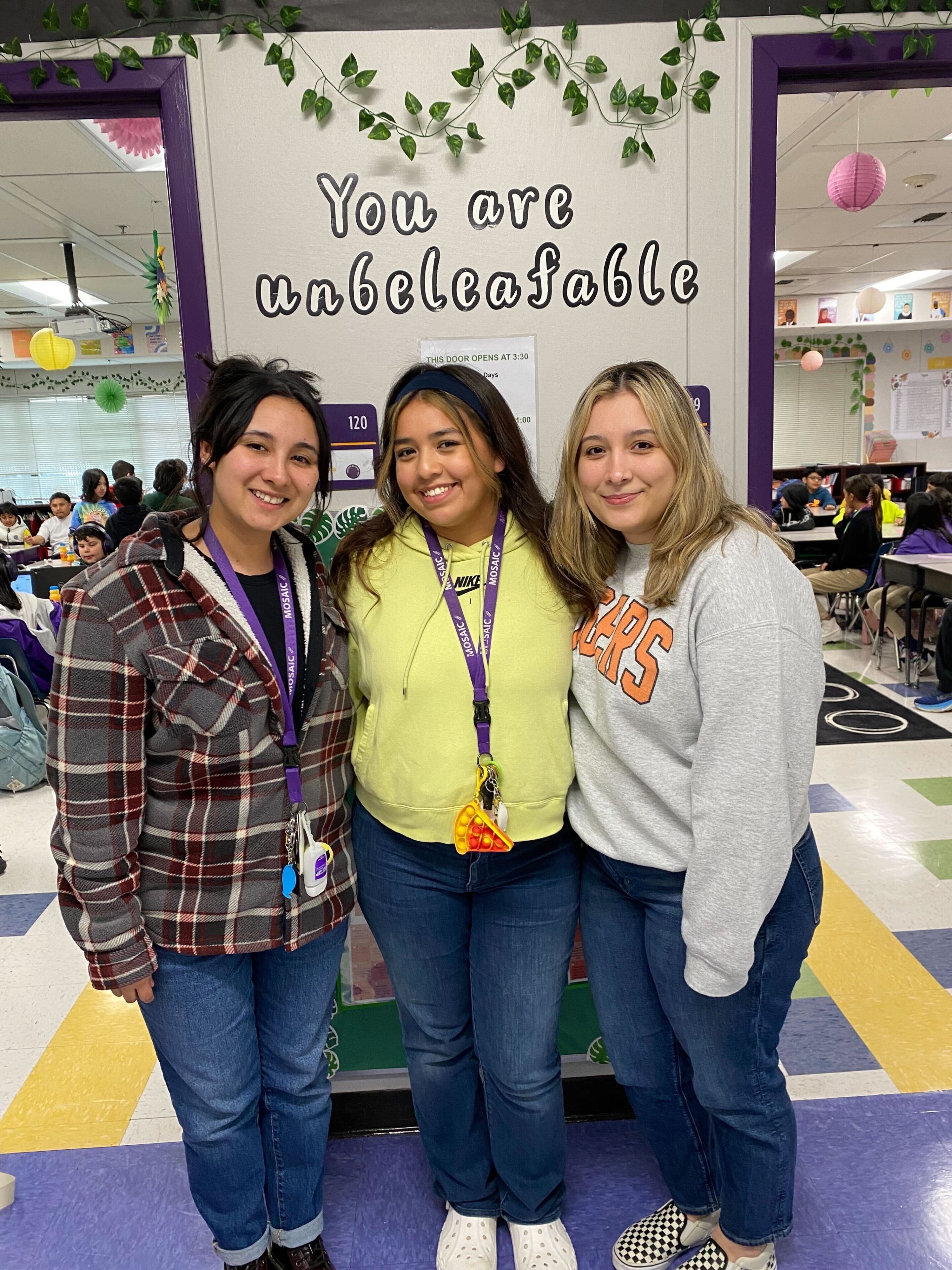
How Co-Teacher Collaboration Can Benefit Your Classroom
Alejandra Chavez, Education Specialist at Rocketship Mosaic Elementary
While working at Rocketship Mosaic Elementary, I have learned that collaboration is key for a successful, inclusive classroom. As an education specialist, I case manage and provide specialized academic instruction for students with learning disabilities. Rocketship operates a meaningful inclusion model that allows students with special education needs to remain in the general education classroom with their peers. Students with special needs spend 50 to 80% of their day in general education classrooms, where they experience the same instructional program as their typically developing peers and also receive small group co-teaching and individual instruction for more personalized support.
It is my responsibility to ensure that the students on my caseload are provided the appropriate accommodations and modifications according to their individualized educational plan, in order for them to access content in the general education classroom. Some examples of these accommodations and modifications are preferential seating, text-to-speech for text-based materials, and chunking classroom information to support the retention of information and allow processing time.
In order to ensure all students are getting their accommodations/modifications met and thriving in the general classroom, the general education teachers and I hold weekly collaboration meetings to discuss student needs and progress. I have had the pleasure to co-teach with Ms. Garcia and Ms. Acosta, both of whom are 4th-grade humanities teachers. This is our second year working together and they have made it a breeze by fully integrating me into their classrooms.
As educators, we know that building relationships with our students and families is beneficial to their success in and out of the classroom. I have found that this also applies to co-teachers. In order to best support our students, we as co-teachers need to be aligned on the content we are teaching and our expectations for all students. We are constantly collaborating daily.
During close reading, I push into the general education classroom and co-teach with Ms. Garcia. During this time, Ms. Garcia teaches a lesson to the whole class. I support a group of 8 students who are sitting at one team table. For the most part, my students are able to follow along and engage in instruction. During turn and talks, I provide scaffolds and sentence starters to support my students in a group discussion to get their critical thinking skills flowing. When writing annotations, I complete this task with them using a “we do” model by doing it together. When I notice my students need to be challenged, I allow them to complete a portion of their annotations independently and I provide individual feedback.
Ms. Garcia, Ms. Acosta, and I have found an effective system that works best for us to stay aligned throughout each lesson. We have collaborated and created Google slides for each lesson and modified packets which are accessible to all of us at all times. Before each week, we preview the lesson together and brainstorm what supports our students will need to successfully complete their work. We have normed on providing modified materials for those students who need the extra support. These materials typically consist of graphic organizers for annotations and meaning statements, embedded sentence stems, and modified paper.
We believe it is important to hold all students to the same level of expectations but understand how some students may need more guidance than others in order to meet those expectations. With this in mind, we also modify our instruction to cater to our students’ success.
If you’re looking to better collaborate with your co-teacher to make classrooms more accessible for all students, here are some questions you ask and tips to get started:
Question 1: Will all students thrive with the same type of seating throughout the lesson?
Tip: Provide alternative chair options like a wiggle seat or a ball chair.
Question 2: Will all students be able to read the materials independently?
Tip: Utilize technology and provide an option where students can have the text read aloud to them.
Question 3: Will all students be able to independently write a paragraph?
Tip: Provide modifications such as fill in the blank or completing a graphic organizer.
Collaborating with our co-teachers not only makes for better relationships amongst staff but more importantly norms that adjusting our learning environments to make them more inclusive for all students, helps everyone thrive. Learning doesn’t need to be a one-size-fits-all model and as an education specialist, I’m grateful to be able to make that a reality for our Rocketeers.
Published on June 10, 2024
Read more stories about: Talent Development.

